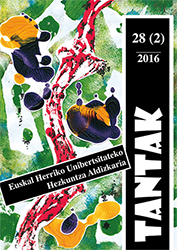Kulturarteko harremanak Bigarren Hezkuntzan: ikasle etorkin eta bertakoen akulturazio-orientazioak
##plugins.themes.bootstrap3.article.main##
##plugins.themes.bootstrap3.article.sidebar##
Published
2017-05-23
Naiara Berasategi Sancho
Nekane Larrañaga Aizpuru
Iñaki García Fernández
María José Azurmendi Ayerbe
Abstract
This study analyzes the acculturation orientations of Basque students of secondary, and it compares the orientations by origin and ethno-linguistic identity. The results showed that the orientations of acculturation more accepted were individualism, separation-segregation and integration. The orientations of both groups, native and immigrant students are coincident. Intergroup relations resulting from interactions of the acculturation of both groups would be quite positive except in cases of segregation-separation could be conflicting. Native students were classified into three groups according to their ethno-linguistic identity, dual identity, Basque identity polarized, and Spanish polarized identity. In turn, the immigrant students were classified into two groups: identity with the country of origin and dual identity. The results do not support the hypothesis that subjects with dual identity were more positive than subjects with polarized identity acculturation.
##plugins.themes.bootstrap3.article.details##
Issue
Section
Papers

